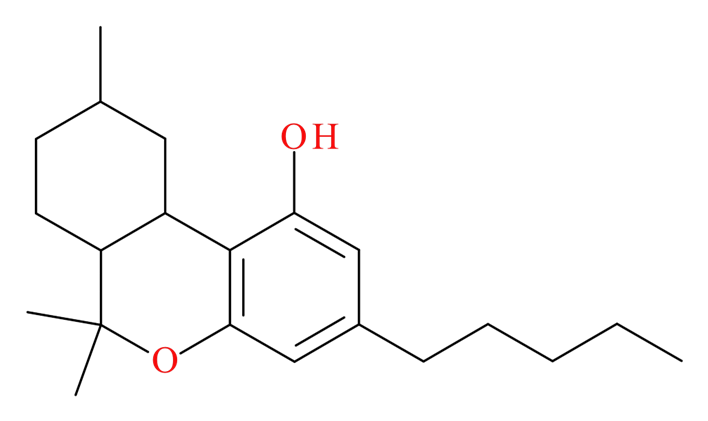HHC
The following information was compiled in December 2024 and is subject to change as new research is conducted and as new information becomes available:
Description: HHC is classified as a semi-synthetic cannabinoid and is structurally similar to known phytocannabinoids (e.g., delta-9-THC). HHC has two stereoisomers, 9R-HHC and 9S-HHC, both of which have been identified in drug materials and biological specimens in many countries since recreational emergence in 2022.1,2,3,4 HHC was identified in October 2024 by our laboratory and confirmed using standard reference material.
Sample Source: Forensic Science Network (Columbia, SC)
Sample Appearance: Blood specimen
Pharmacology: In vitro data available show that HHC is an agonist at the CB1 receptor with potency less than that of delta-9-THC.1,5 9R-HHC is more potent than its stereoisomer, 9S-HHC.5
Toxicology: HHC has been identified in four toxicology cases to date at the CFSRE.
Drug Materials: HHC has been detected in drug materials at the CFSRE.
Demographics / Geographics: Toxicology specimens positive for HHC originated from South Carolina and New York. HHC was identified alone and alongside traditional drugs (e.g., methamphetamine, fentanyl, delta-9-THC).
Legal Status: HHC is not currently a scheduled drug in the United States.
- Class:
- Cannabinoid
- Appearance:
- Blood
- Formula:
- C21H32O2
- MW:
- 316.5
- [M+]:
- 316
- [M+H]+:
- 317.2475
- IUPAC:
- 6,6,9-trimethyl-3-pentyl-6a,7,8,9,10,10a-hexahydrobenzo[c]chromen-1-ol
- Report Date:
- December 18, 2024









